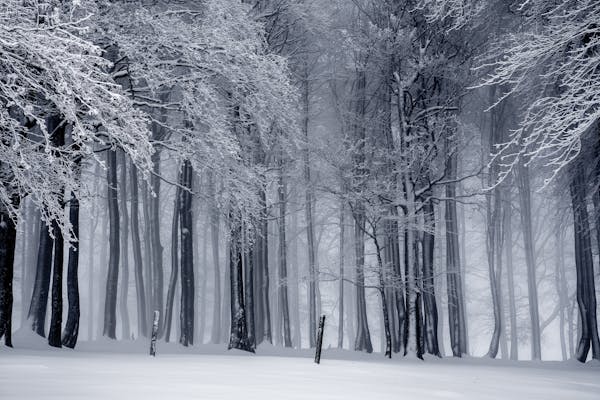Unlocking the Secrets of African Bermudagrass
How a Tiny Genome is Revolutionizing Turfgrass Science
Article Navigation
The Unsung Hero of Perfect Lawns
Imagine a grass so resilient it thrives in scorching heat, drought, and punishing foot traffic—yet fine enough for golf's most prestigious greens. This botanical marvel exists in African bermudagrass (Cynodon transvaalensis), a humble South African native whose genetic secrets are now being decoded.
As climate change intensifies, this unassuming turfgrass has emerged as a critical weapon in creating sustainable landscapes. In 2021, scientists achieved a milestone: the first chromosome-scale genome assembly of this species 1 . This breakthrough isn't just about grass—it's about reengineering nature to withstand our planet's uncertain future.

Decoding the Blueprint: Inside the Genome Assembly Breakthrough
The Puzzle of Polyploidy
African bermudagrass presented geneticists with a formidable challenge. Its diploid structure (2n = 18 chromosomes) 1 masks extreme heterozygosity—a 1.4% variation rate that complicates assembly. Researchers deployed a multi-platform strategy:
- Nanopore sequencing: Generated 176.3× coverage of long reads (N50 = 28 kb)
- Illumina short reads: Provided 41.4× coverage for polishing
- BioNano optical mapping: Created 115.8× coverage genome maps
- Hi-C scaffolding: Anchored 90.48% of scaffolds into pseudochromosomes 1
The result? A 423.42 Mb assembly covering 93.2% of the estimated genome, with 28,444 annotated genes 1 . This precision map revealed key evolutionary insights: African bermudagrass belongs to the PACMAD clade, a group where C₄ photosynthesis independently evolved 15–20 times 1 4 .
Genome Assembly Statistics of C. transvaalensis
| Metric | Result | Significance |
|---|---|---|
| Genome size (est.) | 454.4 Mb | Determined via flow cytometry |
| Scaffold N50 | 5.37 Mb | Indicates high assembly continuity |
| Anchored sequences | 383.08 Mb (90.5%) | Enables chromosome-level studies |
| Protein-coding genes | 28,444 | Comparable to Oropetium thomaeum |
Stress-Adapted Genetics
Gene expansions were particularly striking in disease resistance and abiotic stress response pathways 1 . These discoveries explain African bermudagrass' legendary resilience—but the real treasure lay in specialized gene families like HSP20s.
Molecular Survival Kit: The HSP20 Superfamily
Heat shock proteins (HSPs) act as cellular bodyguards, preventing protein damage under stress. African bermudagrass packs 41 HSP20 genes—nearly double Arabidopsis' count—classified into 12 subfamilies based on cellular location 3 .
Evolutionary Innovation Through Duplication
Gene duplication turbocharged stress adaptation:
- 15 paralog pairs: 9 from tandem duplications, 6 from whole-genome events
- CtHSP20-9/CtHSP20-10: A WGD-derived pair showing signatures of positive selection
- CtHSP20-14: A monocot-specific gene active at all temperatures 3
Promoter analysis revealed why these genes respond so precisely: nearly 50% of cis-elements are stress-responsive switches 3 . Under heat, Group I HSP20s surge—but Group II defies expectations by activating in cold conditions.

Expression Patterns of Select HSP20 Genes Under Stress
| Gene | Heat | Cold |
|---|---|---|
| CtHSP20-9 | 8.5× ↑ | 1.2× ↑ |
| CtHSP20-10 | 7.8× ↑ | 1.5× ↑ |
| CtHSP20-14 | 1.0× | 6.2× ↑ |
HSP20 Expression Under Different Stress Conditions
Breeding by Design: The QTL Mapping Revolution
Tracking the Genes Behind Perfect Turf
What makes African bermudagrass a prized breeding parent? Its fine leaf blades and dense sod arise from precise genetic architectures. Researchers cracked this code through quantitative trait locus (QTL) analysis in a self-pollinated population 7 .
Methodology Snapshot
- Population: 109 S₁ progeny from genotype "OKC1163"
- Field design: Randomized blocks, 3 replicates, 1.5" mowing height
- Genotyping: High-density linkage map (1,278 markers)
Key QTL for Morphological Traits
| Trait | QTL | Variance |
|---|---|---|
| Leaf width | QCTLBW1 | 34.0% |
| Stem internode | QCTSIL2 | 23.5% |
| Plant height | QCTPH1 | 25.1% |
The Shade Tolerance Advantage
Beyond morphology, African accessions like WIN10F and STIL03 harbor exceptional shade tolerance—a rarity in warm-season grasses. Under 63% shade, these genotypes maintained green cover and density while commercial varieties thinned 2 . SSR marker analysis confirmed they possess novel alleles absent in U.S. cultivars 2 .

Cultivating the Future: From Genes to Green Revolution
Essential Reagents for Bermudagrass Genomics
| Technology | Role |
|---|---|
| Nanopore sequencing | Scaffold generation |
| Hi-C scaffolding | Chromosome-level anchoring |
| GBS | SNP discovery |
| HSP20 HMM profile | Identifying chaperone genes |
The Future of Turfgrass Breeding
The African bermudagrass genome is more than a data trove—it's a breeding accelerator. Projects now combine genomic selection with traditional hybridization:
- 46 accessions: 33 C. dactylon and 13 C. transvaalensis lines
- 84 hybrids: 47 intraspecific tetraploids, 37 triploid interspecifics
CRISPR editing of candidate genes (e.g., RAP2-2 for salt tolerance 4 ) and marker-assisted selection are producing next-generation turfgrasses.
In African bermudagrass, we've found both a mirror reflecting grass evolution and a blueprint for sustainable landscapes. — Cui et al., Horticulture Research (2021) 1